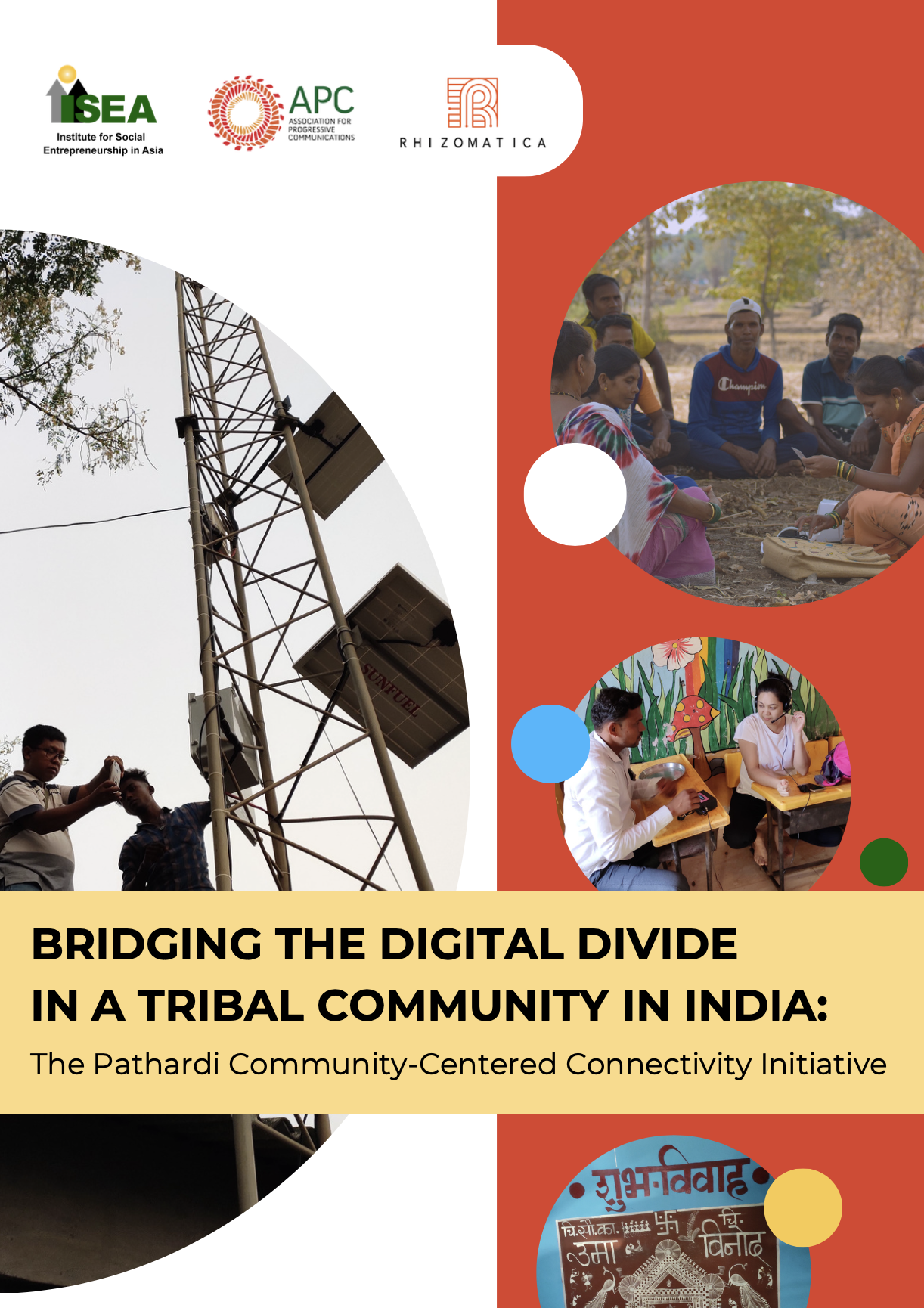This paper was prepared by the Institute for Social Entrepreneurship in Asia (ISEA), as part of the Local Networks (LocNet) Initiative: A Comparative Study of the Financial Sustainability and Socioeconomic Impacts of Alternative Digital Infrastructure Connectivity Business Models and Technologies that is implemented by the Association for Progressive Communications and Rhizomatica. The LocNet initiative is financially supported by the Swedish International Development Cooperation Agency (Sida) and UK International Development from the UK Government through its Digital Access Programme (DAP). This case research project was additionally supported by the Internet Society. The views expressed here do not necessarily reflect the supporters’ views.

INTRODUCTION
This case study is one of four research outputs on the social impact of community-centered connectivity initiatives (CCCIs) that the Institute for Social Entrepreneurship in Asia (ISEA) generated in partnership with the Association for Progressive Communications (APC). These case studies use social entrepreneurship concepts and tools to explore the multifaceted impact of initiatives that have achieved relative success in bringing meaningful connectivity to marginalized populations and communities in Indonesia, India, South Africa, and Kenya.
These CCCIs may be considered as social enterprises in the digital industry. They enable marginalized people and communities not only to access but to control, manage, and use digital resources and connectivity in ways that improve their quality of life and enhance their capacity to be actors in their own development.
As social enterprises, they provide three types of services: transactional, social inclusion, and transformational services. Transactional services are connectivity services that can be accessed via a payment of money or other form of agreed transaction in exchange for the service. Social inclusion services are oriented towards addressing digital exclusion and meaningful connectivity, or other factors behind the “usage” gap. Examples include the provision of affordable or free internet; developing and sharing local digital knowledge resources relevant to meeting community needs; provision of hubs or community-based facilitators to broaden access; and provision of training on digital skills. Transformational services are oriented at enabling the poor and excluded to overcome their capability deprivation and become actors in their own development. These are services that build their capability to own, govern, and manage digital resources in a way that would positively impact their lives and the lives of their families, communities, and the marginalized sectors they are a part of. Transformational services enable the poor and excluded to be co-owners, supervisors, managers, and decision-makers or to become leaders and stakeholders of the social enterprises that provide digital-related services and ensure meaningful connectivity. Transactional and social inclusion services are usually directed at the potential users or customers of digital-related services. Transformational services are usually directed towards those who are capacitated to provide, manage, and operate the provision of digital-related services to communities.
These three types of services result in or facilitate various social impacts. Depending on which type of service played the most significant role in bringing about the social impact, they are then referred to as transactional services-facilitated impacts, social inclusion services- facilitated impacts, and transformational services-facilitated impacts. Profit-oriented internet service provider companies mainly bring about transactional services-facilitated impacts. The cases studied would substantiate that beyond these transactional services-facilitated impacts, many of the social impacts brought about by CCCIs are facilitated by their social inclusion and transformational services. The analytical tools used to study the social impact of these 4 CCCIs are Development Indexing (DI) and Social Return on Investment (SROI).
Tangible social impacts that can be easily monetized include economic benefits such as increased incomes or cost savings derived from the use of the Internet. Intangible social impacts such as increased capacities for inclusive human development and community empowerment are much harder to quantify and monetize. Following the principles and conventions of SROI as a methodology, the cases approximated the quantification of significant social impacts and used monetary proxies that were deemed meaningful and acceptable to the stakeholders benefiting from the CCCI’s services, as represented by the key informants for the cases. Given resource and time constraints, the case studies were only able to explore the quantification and monetization of a limited set of performance indicators deemed significant and as such, the SROI values derived are undervalued.
DI and SROI are complementary measures of effectiveness: Development Indexing is a measure of effectiveness in terms of qualitative impact on relevant stakeholder groups while SROI is a measure of cost-effectiveness. With the aid of DI and SROI as methodologies, the case that follows provides indications of the most significant social impacts that the CCCI in Pathardi has made on the indigenous stakeholders and communities it served, as well as the cost-effectiveness of the intervention in bridging the digital divide in rural India.
